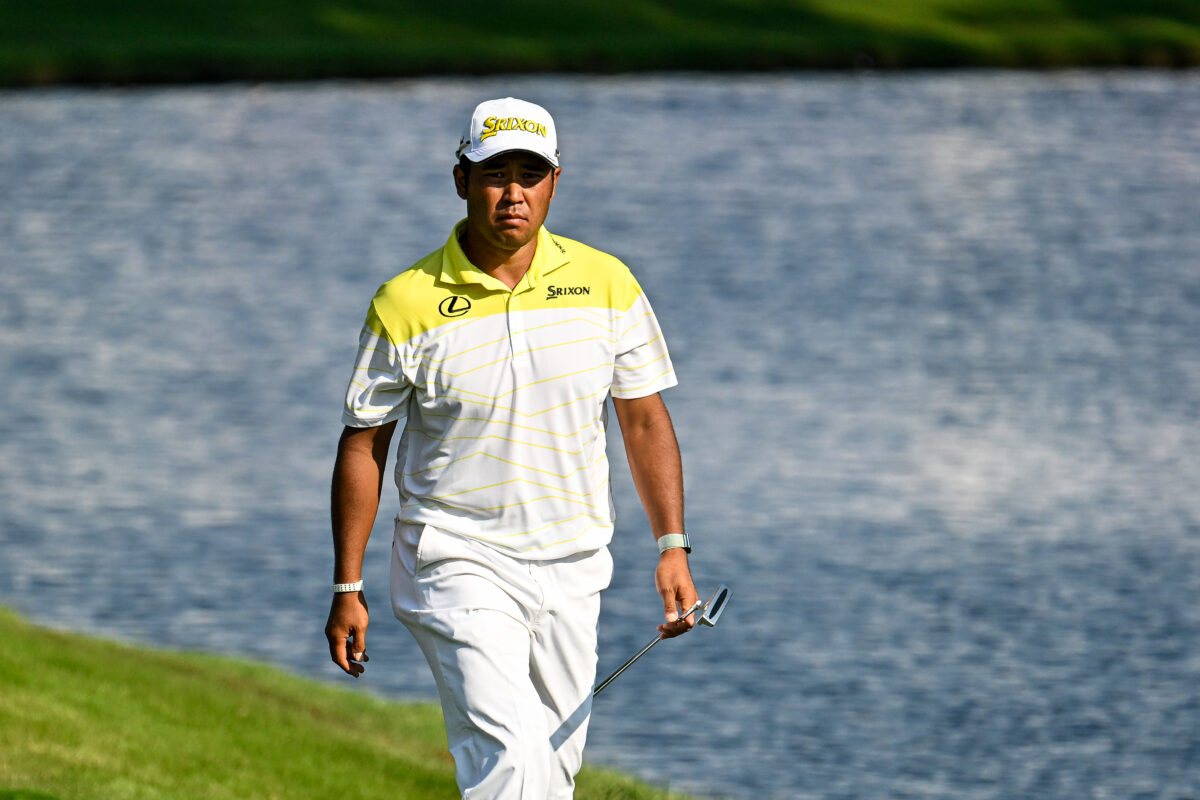Did Hideki Matsuyama violate Rule 8-1 during the final round of the FedEx St. Jude Championship on Sunday? The PGA Tour determined that a violation wasn’t committed by the eventual champion, but the moment is worth closer investigating.
On the 12th hole, PGA Tour Chief Rules Referee Gary Young spoke to Matsuyama.
Rule 8-1 from the Rules of Golf addresses ‘Players Actions That Improve Conditions Affecting the Stroke,’ and in this particular circumstance there was some concern whether Matsuyama had improved his line by tapping down his pitch mark after his second shot at the seventh hole at TPC Southwind had rolled back into a collection area. Matsuyama clearly walked up to the green and tapped down his pitch mark before playing his third shot on to the green.
“Rule 8-1 is very specific about what a player can do as it pertains to the line of play,” Young explained in a post-round interview with Golf Channel’s Todd Lewis. “It came to our attention that Hideki may have done something on his line of play.”
Young approached the Japanese star and addressed the situation with Matsuyama and his interpreter, Robert Turner. Matsuyama had just made a birdie to reach 19 under and owned a seemingly commanding five-stroke lead.
“The video showed that Hideki walked forward and stepped down with irregularity at a what turned out to be a pitch mark. At that point, it was a question of whether it was on his line of play. A couple of video angles showed that it was close, close enough to have to have that conversation with him and unfortunately we had to have that conversation mid-round with him, which is never comforting when you have to go out and talk with that player,” Young said. “But it could affect his strategy playing for the rest of the round if he is going to get a two-stroke penalty. So, I simply had to ask him the question, Hideki, on that hole, and he did recall the situation that he had walked forward. I asked him what exactly did he do and why did he do it, he just said it was something that he normally does when he has a pitch mark and he felt it was nowhere near his line of play and that was why he stepped it down.
“Following the conversation with him, I felt very comfortable that he felt it was well off his line of play and then we did get supporting video evidence from a different camera angle which clearly showed where he plays his shot and where the pitch mark was. It was a good 3 feet away. Now, some people may say, well, that’s pretty close. For that short of a shot and one of the best players in the world that is a pretty tight area you’re talking about, so, the committee felt very, very comfortable with the decision.”
Lewis pressed Young if there was any additional discussion thereafter whether a rules violation had occurred and Young answered, “In my mind, when we had that conversation, I felt a comfort level that he was well off his line of play.”
Lewis also asked why it took several holes for Matsuyama to be informed of the potential rules violation. “It took some time for the message to come to me that this potential violation had occurred. Then it took time to look for any video evidence. Next it was circulated to all of the members of the rules committee and Young also consulted with the USGA to make sure they had their support,” he said. “It felt really bad to possibly have affected him but that’s the rough part of our job.”
Matsuyama’s round went off the rails as he played Nos. 12-16 in 4 over and lost the lead temporarily to Viktor Hovland before righting the ship and making birdies on the final two holes to win by two strokes over Hovland and Xander Schauffele.
“It was really a non-issue,” Matsuyama said after the round. “They just wanted to check and make sure that the rules were kept, which they were. And it really did not affect me the rest of the day. If I was worried that I had done something wrong, that would have rattled me. But it was really a non-issue, so it was fine.”
